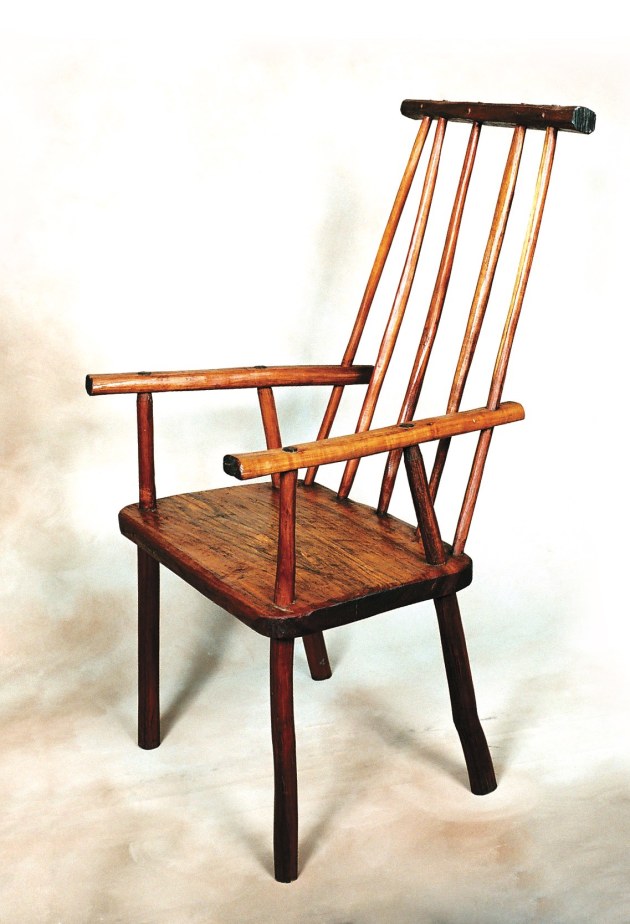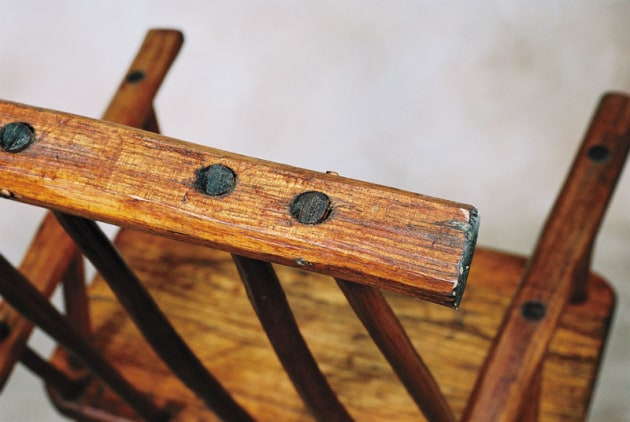Possum Tales
Words: Jamie Bell
Stick furniture ranges in sophistication from a three-legged milking stool to turned and carved Windsor chairs, but for simplicity of design and construction the Australian Jimmy Possum chair is hard to beat. Yet despite this simplicity, or perhaps because of it, the Jimmy Possum chair has widespread appeal. Since it was first made during the 1890s it has become an Australian icon of bush furniture.
The original maker is said to be a local character from the Deloraine district of Tasmania who, like many pioneers and bushworkers of the time, made a hollow tree his home, possum like. Another theory is that he earned his nickname after spending a night in a hollow tree following a lengthy session celebrating chair sales at a local inn. An alternate version has it that Jimmy was in fact a possum who came down from a tree each night to eat off a stick chair placed there, a prospective buyer of the chair being informed that it was ‘Jimmy’s’ chair.
The Deloraine chairs were painted grey or green and sold for two shillings and sixpence. If Jimmy Possum was a timber worker, this extra income would have come in handy in 1890s depression Australia. It is said that Jimmy Possum also made stools and clothes pegs. Several people are believed to have made Jimmy Possum style chairs in the Deloraine area
between the 1890s and the 1930s.
The origins of the name remain uncertain, but the ingenuity of the chair’s design is clear, born of the need to make a saleable item from readily available materials (branches and a timber slab) with basic tools (a saw, an adze, a drawknife, and an auger or brace and bit). The form owes something to traditional stick furniture, including the Windsor chair, although the legs of Windsor chairs don’t pass through the seat.
This feature is typical of country stick furniture and ensures that the joints tighten when the chair is sat on. It relies on the legs being tapered and angled. They are also tapered to pass through the arms where they are secured by wedges. The sticks in the back may be pegged in position. The result is a functional and pleasing chair that is built to last.
Stick chair design suits the manufacturing methods of mass production and has obvious appeal to designer/makers with a rustic or bush aesthetic. Early Australian commercial versions of stick chairs included the popular ‘Kangaroo Chair’ made by the Melbourne Chair Co in the early 1900s and the George Peddle railway chair of the Tasmanian railways.
The Jimmy Possum is one of the original local versions of stick chairs that now stands alongside the likes of the Coolgardie food safe as an Australian furniture design classic.
The Possum chair shown above was Geoffrey Giles’ entry in AWR’s reMADE competition in 2005. ‘I built the chair in the traditional manner with a highly raked back, a split and adzed seat, riven legs and small spindles. The leg tenons were sized with rounding planes, the joints were wedged and the comb was pegged in three locations. The surface finish is direct from the tool, not sanded; with a finish of linseed and turpentine applied over many months.’





